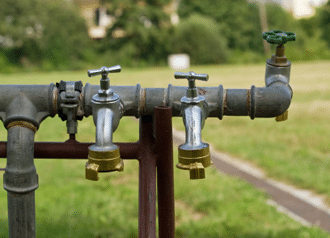Eco-Conscious Plumbing Options: Improving Residential Sustainability
Eco-Conscious Plumbing Options: Improving Residential Sustainability
Blog Article
What are your ideas regarding Sustainability Remains Key Trend in Plumbing Practices?

Introduction
In today's globe, sustainable living is ending up being significantly important. One location where home owners can make a significant influence is through environmentally friendly plumbing options. By embracing ecologically conscious practices, households can lower their water and power usage while contributing to a healthier earth.
Water-Efficient Components
Conventional components usually drainage unnecessarily. Nonetheless, contemporary low-flow toilets, taps, and showerheads are developed to decrease water usage without giving up performance. These components can substantially reduce family water consumption, causing reduced water expenses and a lowered environmental footprint.
Greywater Equipments
Greywater refers to gently utilized water from sources such as showers, sinks, and washing devices. Rather than letting this water go to waste, greywater systems recycle it for non-potable uses such as landscape irrigation and toilet flushing. By executing a greywater system, property owners can conserve fresh water resources and lower pressure on local wastewater treatment facilities.
Rainwater Harvesting
Rain gathering involves accumulating and keeping rain for different functions, consisting of watering, commode flushing, and washing. Rain collecting systems typically include a collection surface area (such as a roofing), rain gutters, downspouts, and tank. By harvesting rainwater, home owners can minimize their reliance on municipal water sources and conserve fresh water resources.
Solar Water Heaters
Typical water heaters rely on nonrenewable fuel sources or electrical power to heat water, adding to carbon emissions and energy intake. In contrast, solar hot water heater use sunlight to warmth water, providing an eco-friendly and environmentally friendly option. By using solar energy, property owners can decrease their power bills and decrease their carbon impact.
Environment-friendly Pipeline Products
Traditional plumbing materials such as copper and PVC can have unfavorable ecological effects during production and disposal. However, there are lasting choices readily available, such as recycled steel, cross-linked polyethylene (PEX), and high-density polyethylene (HDPE). These environment-friendly pipe materials offer durability, long life, and lowered environmental impact.
Energy-Efficient Devices
Along with water-efficient fixtures, energy-efficient devices can additionally decrease a home's environmental footprint. High-efficiency cleaning equipments and dish washers utilize much less water and energy per cycle, assisting to save resources and lower utility costs. When looking for appliances, look for power STAR ® certified models for maximum efficiency.
Smart Water Administration Systems
Advancements in innovation have actually made it easier than ever to keep an eye on and enhance water use in the home. Smart water management systems use sensing units and data analytics to track water usage in real-time, recognize leakages, and provide understandings for preservation. By carrying out smart water administration remedies, house owners can reduce waste and take full advantage of effectiveness.
Cost Factors to consider
While environmentally friendly pipes choices might have greater ahead of time expenses than traditional alternatives, they usually give lasting cost savings through minimized water and energy costs. Furthermore, many governments provide motivations such as rebates and tax obligation credit ratings for eco-friendly upgrades, assisting to balance out initial costs.
Installment and Upkeep
Proper setup and normal maintenance are crucial for making sure the performance and durability of green plumbing systems. It is very important to work with qualified experts to set up and service these systems to stay clear of concerns and take full advantage of performance. Regular upkeep jobs such as looking for leakages and cleaning filters can also help prevent problems and optimize efficiency.
Ecological Advantages
The ecological benefits of environmentally friendly plumbing are significant. By conserving water and power, home owners can lower their carbon impact and lessen their effect on natural resources. Additionally, green pipes methods can help shield environments and protect biodiversity for future generations.
Health Conveniences
In addition to ecological advantages, eco-friendly pipes can also add to improved interior air quality and wellness. By using safe materials and lessening chemical exposure, house owners can develop a healthier living setting for themselves and their households.
Federal government Incentives
Numerous federal governments offer financial incentives to motivate house owners to take on eco-friendly pipes practices. These motivations may consist of rebates, tax credits, and low-interest finances for energy-efficient upgrades. By benefiting from these programs, home owners can make green improvements much more inexpensive and available.
Conclusion
In conclusion, eco-friendly pipes options supply countless advantages for property owners and the environment alike. By investing in water-efficient components, greywater systems, rainwater harvesting, solar water heaters, eco-friendly pipe products, energy-efficient devices, clever water management systems, and other sustainable options, households can reduce their ecological impact, lower their utility expenses, and add to a much healthier planet for future generations.
Eco-Friendly Plumbing: Transform Your Home with Sustainable Plumbing Options
Understanding Eco-Friendly Plumbing System
At its core, eco-friendly plumbing is all about minimizing water and energy consumption in your home. It’s a green plumbing revolution changing how we think about our water supply and energy use. It offers many options for homeowners, whether you’re upgrading your home or dealing with an older home. By making these changes, you can help the environment, save money on your water and electricity bills, and create a greener, more sustainable home. So, read on to learn how to use eco-friendly plumbing solutions today.
Low Flow Fixtures: A Key to Water Conservation
One of the cornerstones of eco friendly plumbing is the use of low-flow fixtures. These fixtures, which include faucets, showerheads, and toilets, are designed to use much less water than their traditional counterparts. For instance, low-flow showerheads use significantly less water per minute than a standard showerhead without compromising the quality of your shower.
Low-flow toilets are another excellent example of water-saving options. They use fewer gallons of water per flush, making them a more water-efficient choice. By reducing your water usage, these fixtures contribute to a greener home and substantial savings on your water bills.
Maintaining an Eco-Friendly Plumbing System
Another critical aspect of eco-friendly plumbing is addressing water leaks promptly. A small water leak can waste much water over time, leading to water damage and increased water bills.
Regularly checking your plumbing system and fixing leaks can help save gallons of water and reduce your water bills.
Tankless Water Heaters: Hot Water When You Need It
Tankless water heaters, a popular choice in eco-friendly plumbing, are a revolutionary way to heat water in your home. Unlike traditional water heaters that constantly heat a tank of water, tankless water heaters operate on an on-demand basis. This means they only use energy when you need hot water, making them a more energy-efficient option.
This innovative approach to heating water can significantly reduce the energy your home uses. Traditional water heaters constantly work to keep a water tank heated, which requires much energy. In contrast, tankless water heaters heat water when needed, reducing energy consumption and saving money on energy bills. This is a great way to make your home more eco-friendly and embrace an eco-friendly lifestyle.
Insulating Water Pipes: Maximizing Energy Efficiency
Insulating your water pipes is another effective method in eco-friendly plumbing. Proper insulation can prevent heat loss, ensuring your hot water remains hot as it travels from your water heater to your faucet or showerhead. This means your water heater won’t have to work as hard to heat the water, thus saving energy.
For instance, insulating your water pipes can further enhance energy efficiency if you’re using a tankless water heater, which heats water only when needed. This is because the insulation reduces the heat lost as the hot water travels through the pipes, meaning the heater uses less energy to bring the water to the desired temperature.
Dual Flush Toilets: A Water Saving Option
Dual flush toilets are another excellent eco-friendly plumbing option that can help you save water. These toilets offer two flush options: one for liquid waste and one for solid waste. The liquid waste option uses less water than solid waste, allowing you to choose the water flow for each flush based on your needs.
Using less water for liquid waste, dual flush toilets can save thousands of gallons per year compared to traditional bathrooms. This can lead to significant savings on your water bills and contribute to a more sustainable and eco-friendly home.
Touchless Faucets: Saving Water With a Wave of Hand
Touchless faucets are a modern, eco-friendly plumbing option that can help reduce unnecessary water use. These faucets use motion sensors to turn on and off, meaning they only use water when you need it.
This can be particularly useful in the kitchen, where your hands might be full or dirty. Instead of leaving the water running while you handle food or clean dishes, the faucet will only run when your hand comes near the sensor. This reduces water flow and helps you use less water than traditional faucets, contributing to a more eco-friendly lifestyle.
Eco-Friendly Pipes: Eco-Friendly Plumbing Options
When considering eco-friendly plumbing options, paying attention to the materials used in your plumbing system is essential. Some pipes, like those made from copper or stainless steel, are recyclable and more environmentally friendly than PVC pipes. Choosing eco-friendly materials for your pipes can reduce your home’s environmental impact and create a more sustainable plumbing system. By making these small changes, you can make a big difference in your home’s eco-friendliness.
Eco-Friendly Plumbing: Make Your Home Greener
Switching to eco-friendly plumbing options can have a significant positive impact on the environment and your wallet. Not only can these changes reduce your water and energy consumption, but they can also help prevent water waste and damage, contributing to a healthier planet.
Eco-friendly plumbing is more than just a trend; it’s a lifestyle change contributing to a more sustainable future. By making these changes in your home, you can help the planet while saving money on your water and energy bills.
https://intownplumbingtx.com/articles/eco-friendly-plumbing/

Do you appreciate more info about Sustainability Remains Key Trend in Plumbing Practices? Leave a review below. We will be delighted to find out your views about this piece. We are looking forward that you come back again soon. Don't hesitate to pause to share this write-up if you liked it. I truly appreciate your readership.
Visit My Site Report this page